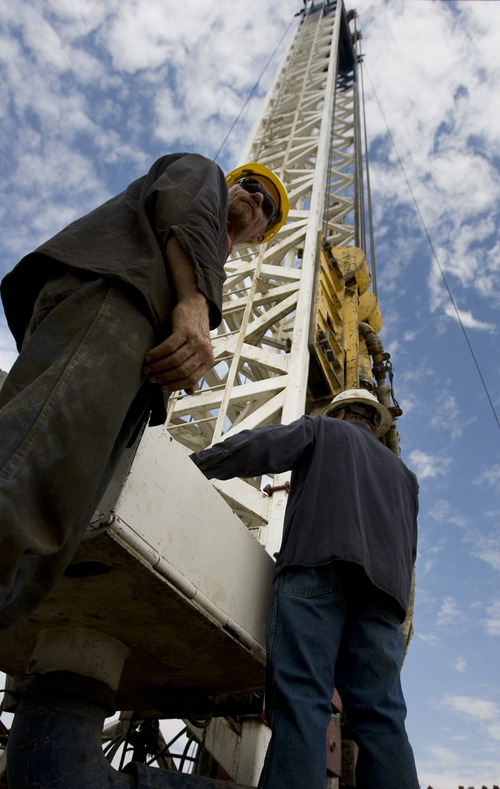This is an archived article that was published on sltrib.com in 2013, and information in the article may be outdated. It is provided only for personal research purposes and may not be reprinted.
Oil and gas development on Utah's federal land could generate up to $6.7 billion in economic activity and 58,000 jobs were it not for excessive regulation, according to a report released Tuesday by a conservative think tank.
"The Bureau of Land Management reports that the approval of new applications for drilling permits on average took 307 days during 2011, which is up from 212 in 2008. Moreover, large tracts of federal lands have been ruled off-limits for resource development under a variety of policies seeking to ensure historic preservation, ecosystem balance, and scenic preservation," states Utah-based Sutherland Institute's new Center for Self Government in the West. The findings are based on West-wide research by University of Wyoming economics professor Timothy Considine, whose past work has come under fire for an alleged pro-industry bias.
Critics found the latest study lacking rigor and premised on faulty assumptions.
"The report claims there is limited access to federal lands for fossil fuel development, which makes one wonder whether the author has been paying attention to what has happened in the last decade," said Ray Rasker, executive director of Headwaters Economics, in an email. He noted Utah and other Western states have seen a drilling boom that has blanketed some areas with pipelines, well pads and roads, and saturated markets with natural gas.
Considine acknowledged Western energy production has climbed since 2009, but increases on private lands have far outpaced increases from federal lands — 28 versus 14 percent for oil, for example. For natural gas, production has climbed 5.4 percent on private land, yet declined by almost 1 percent on federal.
Rasker contends these divergences have more to do with where oil reserves lie and commodity prices than with federal regulations.
"Significant increases in natural gas development, much of it on federal lands, led to an over-supply and a subsequent decline in prices and therefore a shift away from gas development," Rasker said.
According to a recent report from Utah regulators, more than 8,000 oil and gas wells were producing on federal and tribal land as off March. Meanwhile, industry was sitting on nearly 2,900 approved permits to drill on such lands.
Utah officials agreed with Considine's premise, saying energy developers are frustrated with the hoops they must clear to gain access to federal minerals.
"They are concerned that bureaucracy and red tape are making investment opportunities in Utah less attractive as compared with non-public lands states," Cody Stewart, Gov. Gary Herbert's energy adviser, told a legislative panel Wednesday. "In the last three years only 47 parcels have been competitively leased versus 628 in the three years prior. Unless something changes we are setting ourselves up for some lean years in the future."
Sutherland is promoting the new report to bolster the case for transferring federal lands to the states. Officials emphasized the Considine study was funded not by industry, but by a foundation-backed group called the Interstate Policy Alliance.
Under favorable prices and federal policies, Considine believes Utah can add $5 billion a year and 40,000 jobs to its economy. However, this hardly accounts for the hit the Utah economy could face should drilling proceed in some of the state's outdoor recreation areas.
Economic activity and jobs associated with this industry are double what oil and gas would generate under Considine's aggressive drilling scenario, according to Peter Metcalf, CEO of Black Diamond Equipment.
Unrestrained drilling would harm Utah's ability to draw millions of visitors and support a sustainable economy, not to mention its enviable quality of life, Metcalf told people gathered Monday outside BLM's Salt Lake City office protesting proposed oil and gas leasing on Utah's San Rafael Swell.





